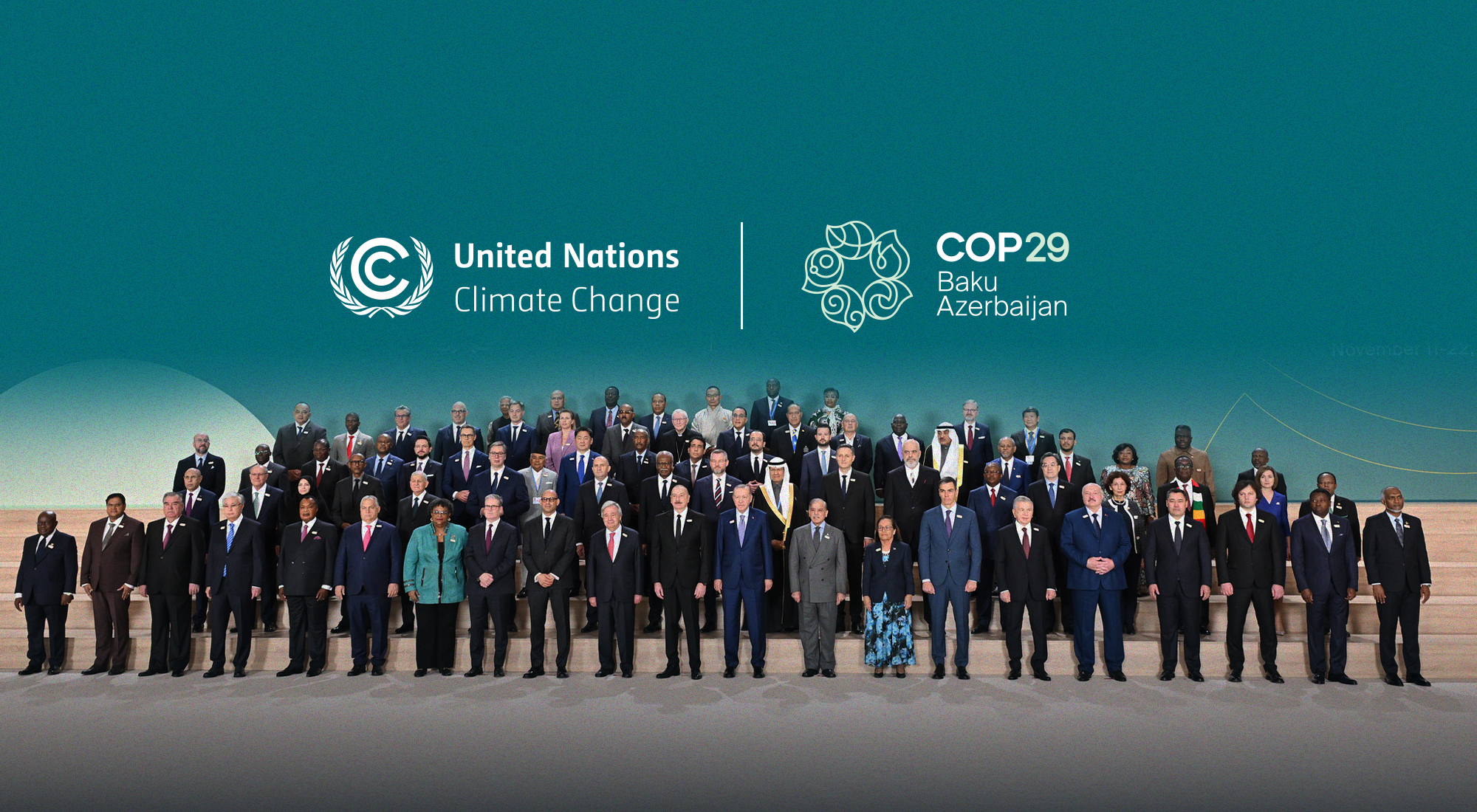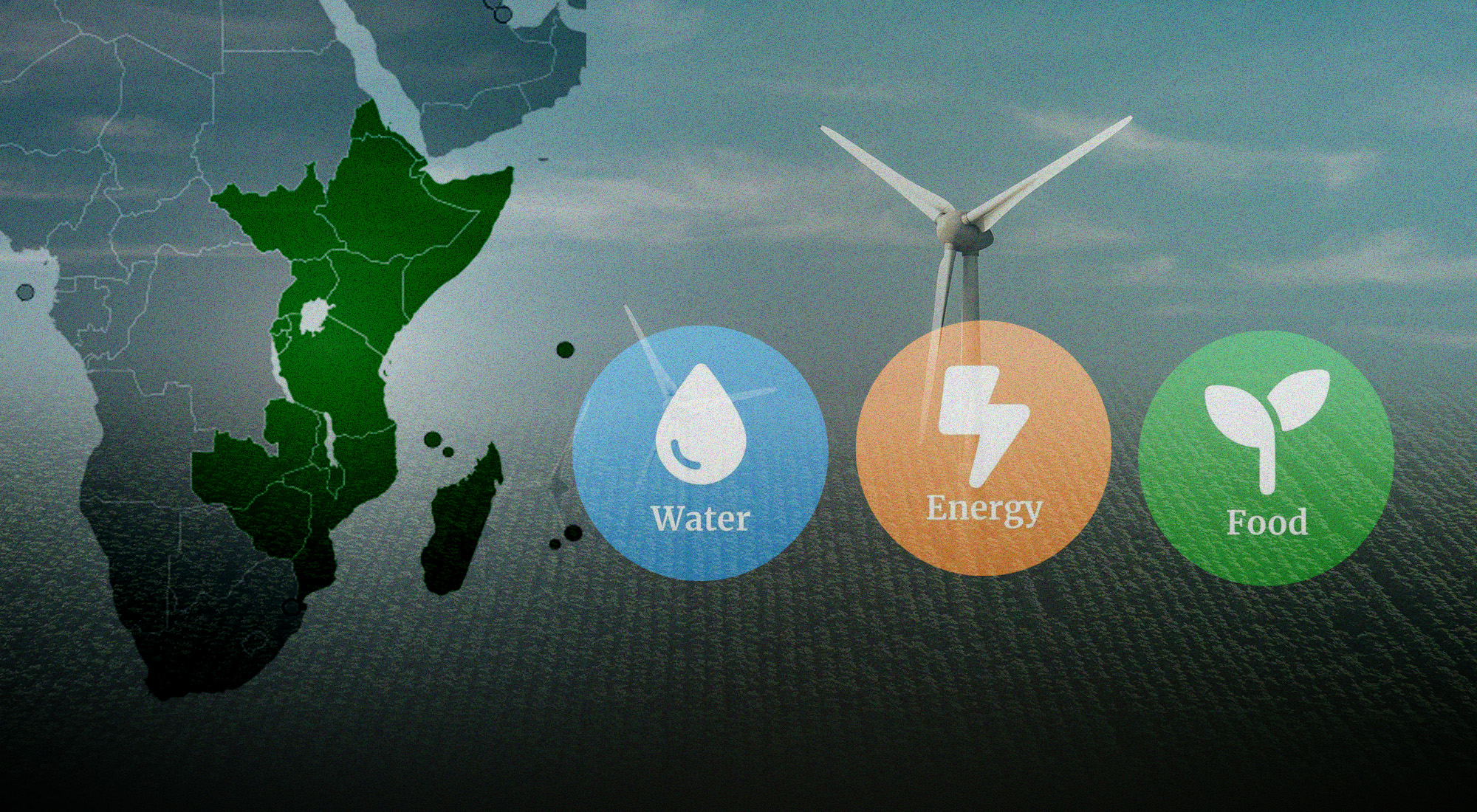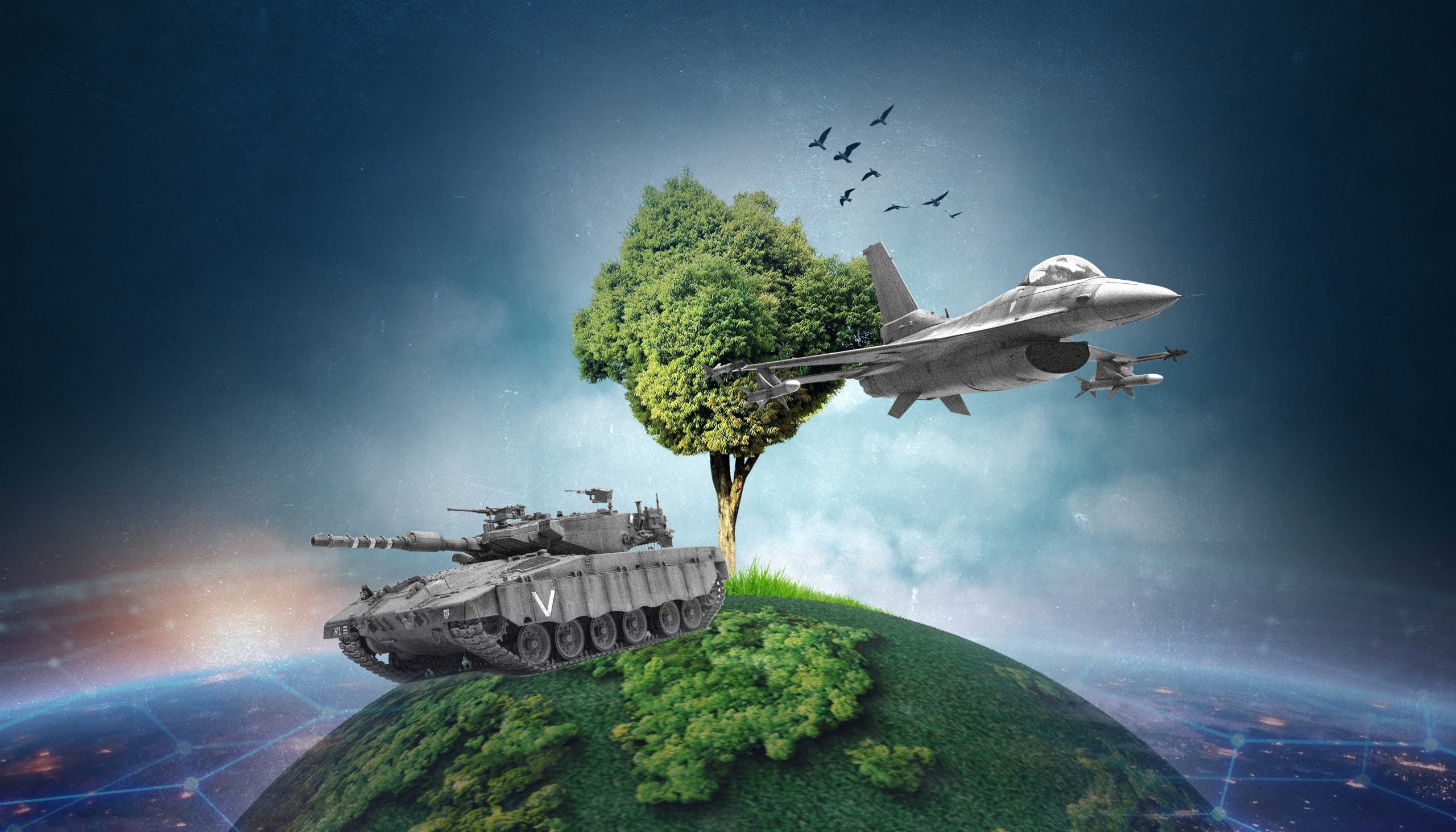In November 2024, nations gathered in Baku as Azerbaijan hosted the 29th Conference of the Parties (COP29)—a formal meeting of the United Nations Framework Convention on Climate Change (UNFCCC) parties—to tackle one of humanity’s most pressing challenges—climate change. With less than 11 months of preparation—significantly shorter than the typical two-year timeline—Azerbaijan successfully hosted the first major international climate conference in the region. This achievement underscored the country’s growing capability to organize large-scale global events and reaffirmed its status as an emerging leader in international climate diplomacy.
COP29 Azerbaijan was far more than a diplomatic or ceremonial gathering. It served as a platform for critical negotiations, agreements, and initiatives that aimed to advance the global climate agenda. This article examines the legacy of COP29 by exploring key initiatives and groundbreaking achievements that collectively aim to make long-term contributions to global climate goals. In particular, it highlights Azerbaijan’s active participation in the COP Presidencies’ Troika, which ensured continuity of ambition across consecutive conferences, the establishment of a US$300 billion annual climate finance target by 2035, and innovative peace initiatives linking climate action with conflict resolution. These achievements reflect Azerbaijan’s unique position as a bridge between the Global North and Global South, fostering dialogue and actionable strategies to address the multifaceted climate crisis.
The Troika Initiative: Ensuring Continuity and Ambition
One of the defining features of COP29 was Azerbaijan’s critical role in the COP Presidencies’ Troika, an initiative first formalized at COP28 under the UAE Consensus in Dubai in 2023. The Troika framework, involving the preceding (UAE), current (Azerbaijan), and upcoming (Brazil) COP presidencies, aims to ensure continuity, enhance collaboration, and sustain momentum for global climate action.[1] By aligning the objectives of COP28, COP29, and COP30, the Troika fosters a cohesive approach to advancing the “Roadmap to Mission 1.5°C,” a strategy to strengthen Nationally Determined Contributions (NDCs) and ensure alignment with the Paris Agreement’s goal of restricting global warming to 1.5°C.[2]
The establishment of the Climate Finance Action Fund (CFAF) during COP29 marked a milestone in the Troika’s efforts.[3] This catalytic public-private partnership fund is specifically designed to support developing nations in implementing climate projects while enabling member states to meet their next generation of NDCs. The CFAF allocates 50% of its resources toward climate projects in developing countries and 50% toward supporting developed nations’ commitments under the Paris Agreement.[4] Its innovative features include a Rapid Response Funding Facility to address urgent climate challenges and first-loss funding mechanisms to de-risk investments in green industrial projects.[5]
The Troika’s collaborative efforts extended beyond the UNFCCC framework to platforms like the G20. Representatives from the UAE, Azerbaijan, and Brazil convened at G20 Finance Track meetings in Rio de Janeiro, advocating for combined public and private sector resources to address climate disasters.[6] This integration of efforts across multilateral institutions underscores the Troika’s influence in mobilizing finance and resources for climate resilience, particularly in the Global South. This engagement with the G20 is crucial, given that its members account for 85% of the world’s economy and are the largest contributors to multilateral development banks, helping to steer climate finance.[7]
By institutionalizing operations, promoting collaborative dialogue, and expanding its global influence, Azerbaijan advanced the vision set forth at COP28 and solidified the Troika’s role as a vital force for continuity and ambition in climate diplomacy. This underscores COP29 Azerbaijan’s commitment to maintaining consistent, ambitious, and inclusive climate action across successive conferences.
Historic Milestones in Climate Finance: Carbon Markets, Loss and Damage, and Adaptation
Building on the Troika framework’s achievements, COP29 accomplished significant breakthroughs in climate finance, carbon market standardization, the Loss and Damage Fund, and adaptation policy, establishing its status as a historic UNFCCC event.
In terms of climate finance, one of the most significant achievements of COP29 was the agreement to triple climate finance for developing nations. Under Azerbaijan’s leadership, developed countries committed to mobilizing US$300 billion annually by 2035, a substantial increase from previous targets.[8] This agreement is a crucial step toward closing the climate finance gap, enhancing vulnerable nations’ capacity to address climate challenges. The US$300 billion annual funding will support mitigation, adaptation, and resilience-building projects in the Global South and the transition to renewable energy.[9] By bringing together diverse stakeholders and facilitating compromises between developed and developing nations, Azerbaijan succeeded in advancing discussions that had previously stalled. The agreement also includes mechanisms to mobilize private sector investments, with a long-term target of reaching US$1.3 trillion annually in climate finance by 2035.[10]
Another notable breakthrough at COP29 was the progress made toward international carbon market norms. For the first time, consensus was reached on robust guidelines for a centralized carbon market under the UN framework (Article 6.4 mechanism), unlocking new potential for climate finance through carbon credit trading.[11] Azerbaijan was instrumental in promoting these agreements, which contained requirements for authorizing transactions, developing transparent monitoring registries, and adopting safeguards to ensure environmental and human rights standards. Furthermore, an action plan for 2025 was adopted by the supervisory body, paving the way for further operationalization of these markets. These improvements offer significant potential for developing countries by providing new funding mechanisms for climate efforts. Well-functioning carbon markets could reduce the cost of implementing Nationally Determined Contributions (NDCs) by over half and potentially generate up to US$250 billion in climate finance annually by 2030.[12]
COP29 also marked a critical milestone in global climate action with the complete operationalization of the Loss and Damage Fund, which had been years in the making. This fund, established to provide financial assistance to developing nations facing severe climate consequences, made significant progress during the meeting. The Fund for Responding to Loss and Damage (FRLD) has received further contributions from several countries and subnational entities, bringing the total to nearly US$730 million.[13] Key operational milestones were also met, including the signing of important agreements with the World Bank and the Republic of the Philippines, allowing the fund to accept donations and potentially start financing projects as early as 2025.[14] The launch of the Loss and Damage Fund at COP29 underscores the international community’s commitment to addressing climate change’s disproportionate effects on poorer nations, acknowledging historical injustices, and assisting those most affected by climate-related calamities. The foundation of the fund provides access to new financing opportunities, such as potential collaboration with private sector businesses, governments, and multilateral organizations. This move not only gives hope to nations dealing with severe climate impacts but also paves the way for future climate action, symbolizing a worldwide recognition that those least responsible for the climate issue should not suffer the consequences alone.
COP29 also made significant progress toward adaptation policy, indicating a commitment to increasing global climate resilience. The meeting unveiled the Baku Adaptation Road Map and convened a high-level adaptation debate to support the UAE Framework for Global Climate Resilience. There was also work on the Global Goal on Adaptation (GGA), with discussions focusing on defining indicators for monitoring adaptation progress, including those relevant to specific ecosystems such as marine, mountain, and inland water ecosystems.[15] A significant accomplishment was the introduction of a support program for the execution of National Adaptation Plans (NAPs) for the least-developed countries. The Baku Workplan was also adopted at the summit, aiming to elevate the voices of indigenous peoples and local communities in climate action.[16] While some components of the adaptation strategy, such as the NAP assessment, were postponed until 2025, COP29 offered specific guidelines for compiling and developing indicators for the UAE Framework for Global Climate Resilience, including critical means of implementation indicators.[17] These developments, while modest, lay the groundwork for stronger adaptation policies and demonstrate the rising awareness of adaptation’s relevance in global climate policy.
Peace Initiatives: Azerbaijan’s Vision of Climate Diplomacy
COP29 is considered distinctive compared to previous events due to the launch of two novel initiatives: the COP29 Peace and Climate Initiative and the COP29 Truce Appeal. These initiatives extend beyond standard climate actions by addressing the interconnected challenges of climate change and global conflict. These projects illustrate Azerbaijan’s leadership in combining climate diplomacy and peacebuilding, displaying new approaches to two of the world’s most critical concerns. Azerbaijan aims to demonstrate how environmental cooperation can contribute to peacebuilding, setting a new precedent for global collaboration on these critical issues.
The COP29 Peace and Climate Initiative was initiated by Azerbaijan in collaboration with Egypt, Germany, Italy, Uganda, and the UK.[18] This effort emphasizes the critical link between climate change and conflict. With its own recent experience, Azerbaijan realizes that environmental issues such as deterioration, scarcity of resources, and climate-related calamities can lead to tensions and even conflict. Equally, ongoing conflict can make it difficult to take effective actions against climate change. Azerbaijan hopes to lay the groundwork for environmental and social success by incorporating climate resilience into peacebuilding initiatives. As a result, Azerbaijan has assumed a prominent role in international climate negotiations, developing alliances that allow countries to share best practices for combining climate action and peacebuilding. These collaborations contribute to the development of common frameworks and effective techniques that may be applied across multiple locations. To put it into action, Azerbaijan initiated a Centre of Excellence hub, which serves as a repository for knowledge exchange, strategies, and technology relevant to climate action and peace projects. This center enables stakeholders to access critical information, engage in meaningful conversations, and coordinate their efforts to achieve both climate and peace objectives.[19]
Another key element of COP29’s Peace Initiative is The Baku Call on Climate Action for Peace, Relief, and Recovery (BCCAP), which focuses on the link between climate change, conflict, and humanitarian needs.[20] The BCCAP addresses critical issues such as water scarcity, food insecurity, and land degradation, offering practical solutions like sustainable water management, climate-resilient agriculture, and ecosystem restoration. By tackling these challenges, the initiative not only responds to immediate crises but also supports long-term stability and peace, providing a model for regions facing similar environmental pressures. Furthermore, the program emphasizes the significance of reconstructing communities in a sustainable and resilient manner to future climate change, ensuring that recovery activities benefit both peace and environmental health. Joint projects, such as maintaining watersheds or creating renewable energy, assist in fostering trust and mutual dependence among countries, lowering the likelihood of violence.
As part of its Peace and Climate Initiative, Azerbaijan proposed the COP29 Truce Appeal, inspired by the ancient Greek tradition of the Olympic Truce. This appeal calls for a temporary cessation of conflicts to create a peaceful environment for climate negotiations. Azerbaijan’s three-decade conflict with a neighboring country stands as a vivid reminder of the devastating environmental consequences of war and the persistent damage inflicted on ecosystems, despite numerous efforts to advocate for their protection. The formerly occupied territory of Nagorno-Karabakh experienced significant deforestation, water pollution, and ecosystem destruction, exacerbating the region’s vulnerability to climate change and creating long-term ecological challenges such as soil degradation and biodiversity loss.[21] By reflecting on these experiences, Azerbaijan underscores the broader impact of conflicts on environmental sustainability and the obstacles they present to effective climate action. The COP29 Truce Appeal embodies Azerbaijan’s belief that even a temporary halt to hostilities can prevent further environmental harm and foster collaboration to tackle the global climate crisis.
The Truce Appeal aims to create an environment in which countries may participate in constructive discourse, share resources, and work together on climate measures without being distracted by geopolitical tensions. The appeal also incorporates peacebuilding measures into climate initiatives, acknowledging that calm and stable environments are more conducive to the implementation of sustainable environmental policies. This holistic strategy addresses the underlying causes of conflicts that can impede climate action, resulting in a more resilient and cooperative global community. These initiatives have garnered support from 127 countries and approximately 1,100 non-state players, including civil society, the commercial sector, and academia.[22] This widespread support demonstrates that many stakeholders recognize the need to integrate peace and climate action and that cooperation is required to effectively address global concerns.
While some critics believe that initiatives such as the Truce Appeal are mostly symbolic and lack enforcement mechanisms, Azerbaijan has defended these efforts by emphasizing their importance in raising ambitions, bridging gaps, and prioritizing peace and climate action. Having its own recent experience of conflict, Azerbaijan strongly believes that even symbolic acts can help shape international discourse, foster collaboration, and maintain peace.
Looking ahead, the success of Azerbaijan’s initiatives will be determined by its capacity to translate symbolic advocacy into genuine, tangible results. In a world where climate change and conflict are becoming increasingly intertwined, Azerbaijan’s integrated policies provide a strong step toward a sustainable and peaceful future. These efforts tackle immediate climate concerns while also promoting long-term stability and resilience in afflicted areas. By setting an example for other regions to follow, Azerbaijan emphasizes the need for interdisciplinary and collaborative efforts in addressing the complex challenges of the twenty-first century. Through these initiatives, Azerbaijan’s vision for climate diplomacy underscores the importance of comprehensive and collaborative methods for fostering a more resilient and peaceful global community.
Conclusion
COP29 was a watershed event in global climate diplomacy, with Azerbaijan displaying its capacity to lead and innovate. Azerbaijan’s active engagement in the COP Presidencies’ Troika led to crucial milestones, including the establishment of a US$300 billion annual climate funding target, the standardization of international carbon markets, and the creation of the Loss and Damage Fund. These accomplishments demonstrate its commitment to addressing the global climate crisis through equitable and actionable methods, effectively bridging the gap between developed and developing nations.
What truly distinguished Azerbaijan’s leadership was the convergence of peacebuilding and climate action through the COP29 Peace and Climate Initiative and the COP29 Truce Appeal. By combining environmental cooperation with conflict resolution and building platforms such as the Centre of Excellence Hub, Azerbaijan set a new norm for interdisciplinary solutions to interconnected global concerns.
Azerbaijan recognizes that its mission extends beyond hosting COP29 or operating within its scope, looking years ahead. By working closely with Brazil, it aims not only to ensure the success of next year’s COP30 in addressing current climate risks but also to foster long-term stability, serving as a model for other nations seeking to establish a sustainable, peaceful, and greener future.
[1] United Nations Framework Convention on Climate Change, COP Presidencies Troika letter to parties, 2024, https://unfccc.int/sites/default/files/resource/presidencies_troika_letter_to_parties.pdf.
[2] Ibid.
[3] COP29 Azerbaijan, “Azerbaijan Launches Climate Finance Action Fund in Package of Initiatives for COP29,” July 19, 2024, https://cop29.az/en/media-hub/news/azerbaijan-launches-climate-finance-action-fund-in-package-of-initiatives-for-cop29.
[4] Ibid.
[5] “COP28 Launches the COP Presidencies Troika in Partnership with the COP29 and COP30 Presidencies—A Groundbreaking Initiative to Support Mission 1.5°C by Maintaining Momentum, Locking in Continuity, and Anchoring Implementation,” PR Newswire, 2023, https://www.prnewswire.com/news-releases/cop28-launches-the-cop-presidencies-troika-in-partnership-with-the-cop29-and-cop30-presidenciesa-groundbreaking-initiative-to-support-mission-1-5c-by-maintaining-momentum-locking-in-continuity-and-anchoring-implementation-302060272.html.
[6] G20 Brasil 2024, “In light of the G20, COP Troika strives to increase funding towards tackling the climate crisis,” July 25, 2024, https://www.g20.org/en/news/in-light-of-the-g20-cop-troika-strives-to-increase-funding-towards-tackling-the-climate-crisis.
[7] “G20 sends positive signal on climate finance ahead of COP29,” Greenpeace International, November 19, 2024, https://www.greenpeace.org/international/press-release/71380/g20-sends-positive-signal-climate-finance-cop29/.
[8] United Nations Framework Convention on Climate Change, “COP29 UN Climate Conference agrees to triple finance to developing countries, protecting lives and livelihoods,” November 24, 2024, https://unfccc.int/news/cop29-un-climate-conference-agrees-to-triple-finance-to-developing-countries-protecting-lives-and.
[9] ibid
[10] “COP29: Key outcomes agreed at the UN climate talks in Baku,” Carbon Brief, November 24, 2024, https://www.carbonbrief.org/cop29-key-outcomes-agreed-at-the-un-climate-talks-in-baku/.
[11] “COP29 outcomes: Next steps,” World Resources Institute, https://www.wri.org/insights/cop29-outcomes-next-steps.
[12] “COP29 Baku: Trends, obstacles and the way forward,” Daily Sabah, November 28, 2024, https://www.dailysabah.com/opinion/op-ed/cop29-baku-trends-obstacles-and-the-way-forward.
[13] “COP29 outcomes: Next steps.”
[14] Ibid.
[15] “COP29 Spotlight | The critical role of National Adaptation Plans for Least Developed Countries,” Foresight, November 13, 2024, https://www.climateforesight.eu/articles/cop29-spotlight-the-critical-role-of-national-adaptation-plans-for-least-developed-countries/.
[16] United Nations Framework Convention on Climate Change, “COP29 Adopts Baku Workplan to Elevate Voices of Indigenous Peoples and Local Communities in Climate Action,” November 21, 2024, https://unfccc.int/news/cop29-adopts-baku-workplan-to-elevate-voices-of-indigenous-peoples-and-local-communities-in-climate.
[17] “COP29 Spotlight | The critical role of National Adaptation Plans for Least Developed Countries.”
[18] COP29 Azerbaijan, “COP29 Presidency Launches Initiatives to Focus Global Attention and Accelerate Climate Action,” September 17, 2024, https://cop29.az/en/media-hub/news/cop29-presidency-launches-initiatives-to-focus-global-attention-and-accelerate-climate-action.
[19] “COP29 Spotlight | The critical role of National Adaptation Plans for Least Developed Countries.”
[20] “Baku Call on Climate Action for Peace, Relief, and Recovery,” Rural 21, November 19, 2024, https://www.rural21.com/english/cop28-dossier/detail/article/baku-call-on-climate-action-for-peace-relief-and-recovery.html.
[21] Basharov, G.R., and Shedko, F.S., “Ecological dimension of conflict in Nagorno-Karabakh,” Journal of Environmental Studies 15, no. 3 (2020), 45–60, https://doi.org/10.1234/jes.v15i3.2020.
[22] COP29 Azerbaijan, “COP29 Presidency Launches Initiatives to Focus Global Attention and Accelerate Climate Action.”








